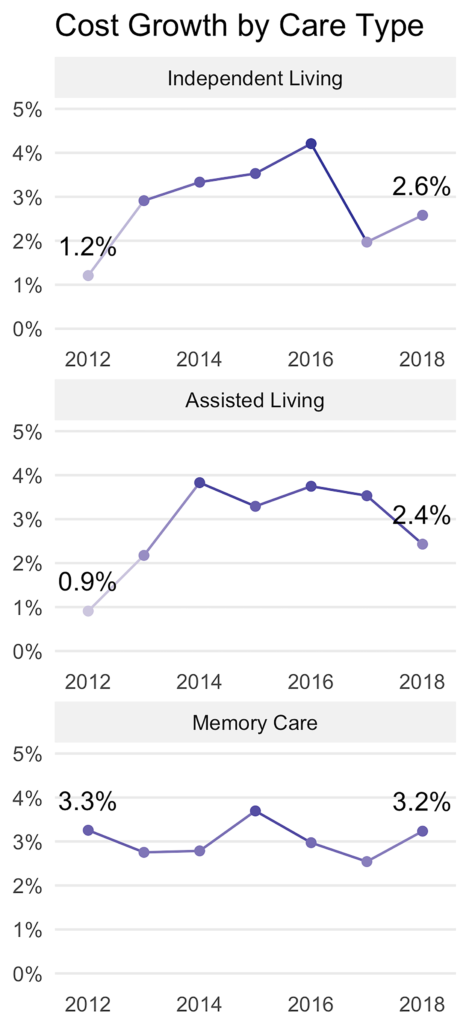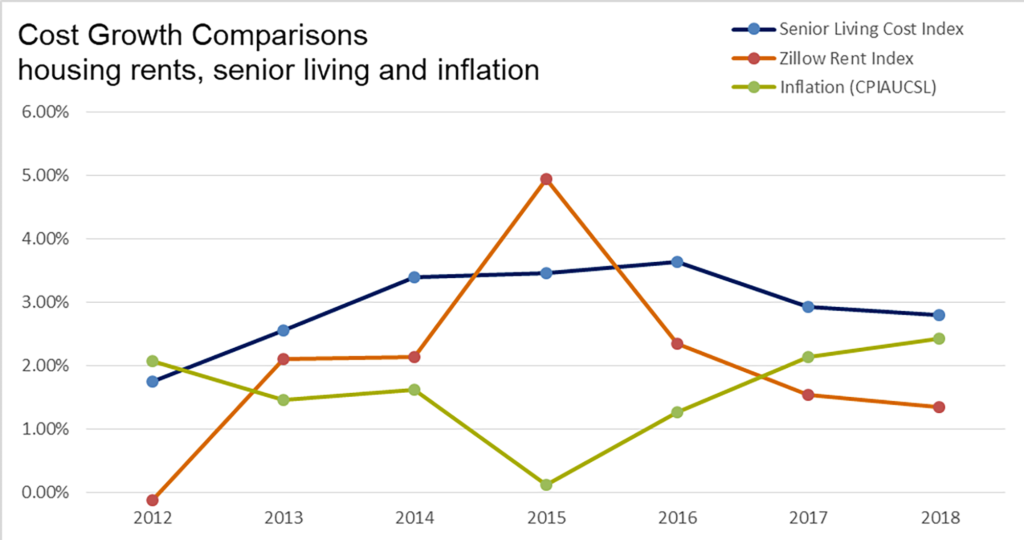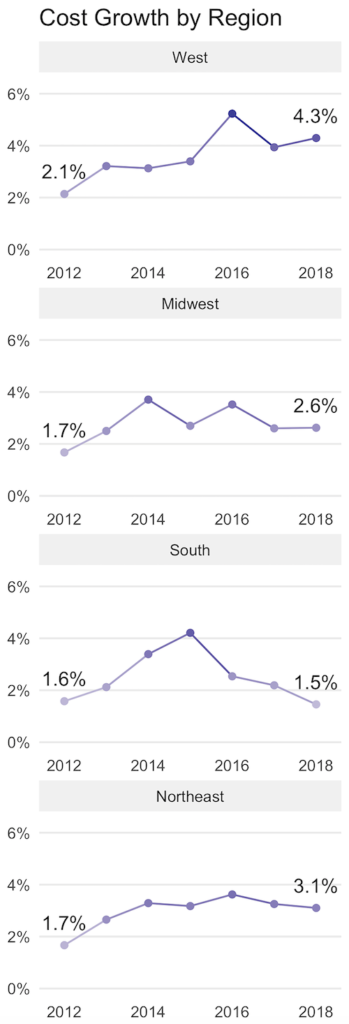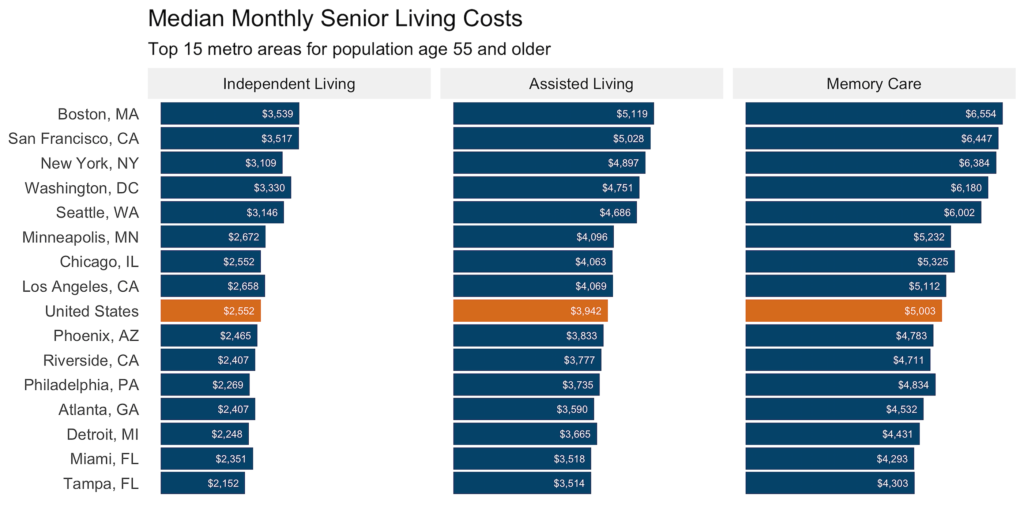
Modest rate increases necessitated by imbalances in supply and demand offer senior living operators in some U.S. markets a marketing opportunity if they’re willing to change their thinking, according to executives with Seattle-based A Place for Mom who spoke with McKnight’s Senior Living.

The senior living referral service released its 2018 National Senior Living Cost Index on Tuesday. Analyzing data from people using the website to move into senior living communities, the company found:
- Independent living rates increased by 2.6% from 2017 to 2018, with median monthly costs at $2,552 in 2018.
- Assisted living costs for seniors grew by 2.4% during the same timeframe, bringing median costs to $3,942 in 2018.
- Memory care costs increased 3.2% in the one-year period, leading to median costs of $5,003 in 2018.
“I don’t see this as a 12-month trend,” Sue Johansen, vice president of partner services with A Place for Mom, told McKnight’s Senior Living. “I think this is going to be three to four years of modest increases and a lot of price stability, which is great for families.”
And great for operators looking to improve occupancy, too — if they position the news correctly, she added.
“Many providers don’t do a great job of speaking to consumers at large,” Johansen said. “Instead of saying, ‘Occupancy is low. Prices are great. This is the time to make that decision,’ they lament it. I would say, own that, use it as a banner to get awareness for consumers and use that as a selling tool. There is a tremendous opportunity there.”

The status of the housing market also provides a marketing message for senior living operators, said Charlie Severn, vice president of brand marketing with A Place for Mom.
“Recovery in the housing market has outpaced the cost of senior living, so consumers have more value from housing, if they’re using a home to finance senior living, than they probably have had over the last five years,” he said. “So it’s also a consideration in terms of communicating to consumers that the value of their dollar can go pretty far right now.”

In addition to growth trends and median costs, the National Senior Living Cost Index provides information on growth by region, as well as expenditure growth and median rates in top metropolitan statistical areas.
A Place for Mom found that the West saw the highest increase, 4.3% from 2017 to 2018. The Northeast experienced a 3.1% increase, the Midwest had a 2.6% increase and the South dropped 1.5%.
A Place for Mom also examined median monthly costs in the top 15 metro areas for those aged 55 or more years. In 2018, Boston overtook New York City for the highest monthly senior living rates for independent living, assisted living and memory care, whereas Tampa, FL, continued to offer the lowest rate on senior living for the same categories.
The fastest-growing metro markets for independent living included Portland, OR, with 11.2% cost growth; Los Angeles, 5.6%; and Chicago, 5.3%.
In the assisted living category, the top five fastest-growing markets were Portland, OR, with a 13.9% cost growth; Charlotte, NC, 10.1%; Seattle 10%; Minneapolis, 9.6%; and Sacramento, 8.7%.
Memory care costs grew fastest in Los Angeles, at 11.6%; Phoenix, 6.3%; New York, 4.7%; Minneapolis, 4.6%; and Riverside, CA, 4.1%.
In cities such as Seattle and San Francisco, Johansen said, “You’ve got the most expensive labor markets and the most expensive real estate markets, and you combine those and there’s built-in pressure there.”
In such areas, Severn said, A Place for Mom’s online Senior Living Cost Index Map can show consumers how moving to a senior living community five or 10 miles away from their original target area can save them 20%.
“We are trying to communicate on the consumer side that you can actually find care or senior living that can meet your budget, if you’re willing to plan and are willing to look in a little bit broader radius than you might consider going in,” he said.

All graphics courtesy of A Place for Mom.



